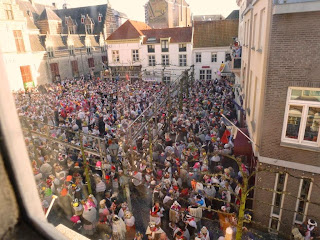
The small-sized Beursplein plays an important role in Bergen's cultural life. Surrounded by French, Mexican and Japanese restaurants as well as Irish and Dutch pubs and the Markiezenhof (Court of the Marquis), it houses a X-mas crib in December.

The Beursplein was only realized by the end of the 15th Century. It's first name was Sint-Jansplein (St John's Square), after a statue of this saint. When trade became more active, the name was changed according to this new function. Beurs means exchange, fair and market.






Many locals flock together on the little square in the weekends before Carnival really breaks loose and will attract many visitors from all over the country. Bergen op Zoom is, together with Maastricht and Den Bosch, one of the most popular places to be during Carnival.

Underneath Beursplein the Grebbe can be found, once a mediaeval canal of about 800 meters between the northern part of town and the old port, later a notorious sewer and at present, being one of the oldest complete underground water systems in the country, a national monument which can be visited regularly. The waste water is now managed through a large synthetic pipe, partly hidden in the ground, as can be seen on this picture.
www.alberthagenaars.nl


























